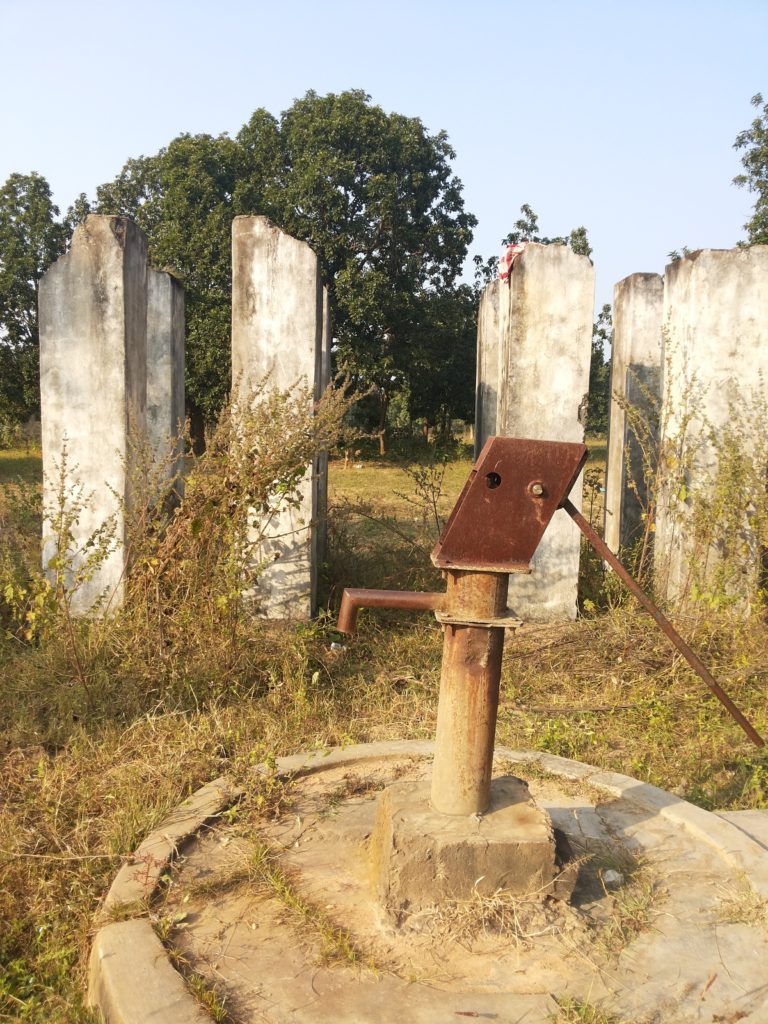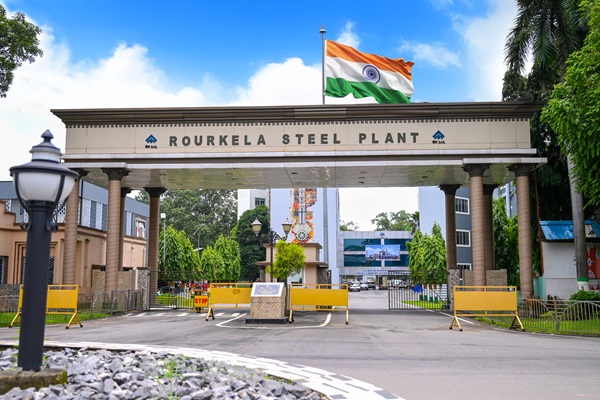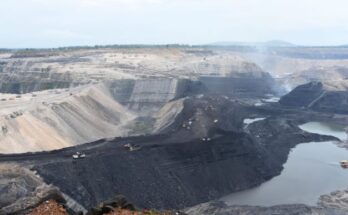—R Krishna Das
Kokbahal village located some 100 km from the district headquarters of Raigarh in Chhattisgarh wears a deserted look. But the scene has not been the same some two decades ago.
The village tucked away unobtrusively has been a mini town with vehicles carrying the sign “Government of India” plying on the inaccessible roads that still remains “Kaccha (untarred)”. People wearing hats, as villagers narrate, were busy drilling from one place to another; installing equipment in search of “something”.
Those on the job have built concrete houses in the area that saw a flurry of activities with modern lifestyle in the otherwise tribal predominated pocket. The densely forested pocket that is now identified as the worst Naxal infested has come to live. After staying for nearly three years, the scientists winded up the operation; dismantled the houses and moved out. What they left has been the
suspense of a huge uranium deposit in the area.

“They drilled at many places and said they were taking the sample to Raipur (the state capital) but never revealed what the operation was all about,” says Bheema Behra of Kokbahal village. The team that
camped in the area was reportedly from the Atomic Minerals Directorate for Exploration and Research (AMD). Neither the state government nor the district administration was briefed about the outcome of the investigation.
The AMD officials could not be reached to know the result of the three-year-long survey in the pocket bordering Odisha. The AMD official website however mentioned the possible deposit in the region
as it said “multidisciplinary investigations have been taken up in search of unconformity related uranium deposits in Chhattisgarh and Orissa (Odisha)”.
The map referring to the important Proterozoic basins of India as target areas for uranium exploration refers to the Chhattisgarh basin that covers the pockets of Baramkela and Dongripal of which Kokbahal
is a part.
“Though it is not a proven reserve but hypotheses and sequence of events give overt signals that high radioactive emissions have been recorded in the area,” noted radiologist and social worker Dr Parivesh
Mishra said. The indications were for huge deposits of radioactive substance probably uranium in the region, he added.
Dr Mishra cited examples to substantiate the hypothesis. “There was spurt in the diagnosis of diseases caused by radioactive emission,” he said, adding that the cases of tuberculosis, cancer were
proportionately high as compared to other parts of the region. In a few villages, cases of deformity in newly born besides mental and physical challenge were also reported, he added.
“We don’t know whether it was a mere rumour or had been a fact, but there was fear that some emission was reported in the pocket during sample collection that had affected the villagers,” Bheema Behra said.
The poor villagers were unaware of the radioactive substance that Nature had bestowed in their land and the possible ill consequences of it.
According to Dr Mishra, there was deep drilling in the area that resulted in more emission of radioactive substances. Probably as uranium is a sensitive mineral of strategic importance, the reserve has not been notified. “If there was no trace of uranium, why did the AMD team camped for three long years and worked in the thickly forested pocket,” he quizzed.
The AMD team that surveyed the area had been reporting to Hyderabad headquarters, Dr Mishra said, quoting his conversation with the scientists who were part of the investigation. The sample collected
was sent to the Nagpur laboratory, he added.
The local post office in Dongaripali establishes the presence of the AMD team. Willing not to be quoted, an employee informed that the otherwise sleepy post office had seen a lot of activities, especially
a jump in the postal economy. “Money transfer was frequent from Hyderabad and Nagpur,” he said, adding that for three years the post office registered record business in the district.
According to the district officials, the exact year could not be known but the first camp was set up in village Salar – 12 Kms from Sarangarh on Saraipali road—sometime in mid nineties.
The second was in village Dongripali (Kokbahal) in 2001 while the third was stationed at the Singhora PWD rest house.
Neither people nor the politicians talk about uranium. While the former due to lack of knowledge on the subject, the latter strategically. If the reserve is proven and explored, it will change the socio-economic condition of the region. But the politicians love to avoid speaking on the issue.
“There are reports of huge uranium reserves but we avoid talking as people may not take it in a positive way,” senior politician Ghanshyam Manhar said. For, there is a common perception that mining would
displace the villages and people would have to face hardship, he added.
Another politician said there were some 56 villages identified where traces of uranium were reportedly found. Since the villages would be displaced, political parties play safe and never talk about the issue.
“Uranium” had never been a poll plank; no political party dares to talk about the mineral that would bring the region to the National and International map.
Interestingly, there is a mutual poll plank understanding between the political parties that no one will take up the issue of uranium. For, if one wanted to score over the opponent, just communicate that his
party’s government would explore the precious uranium if it came to power. That was enough for the explosion!



